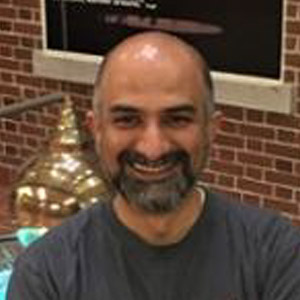Diffuse optical spectroscopy is an optical approach to quantify biological materials in their native states. My lab explores the use of such approaches to probe function and structure of intact, living tissues.
In this talk, I will discuss the physics of light propagation in turbid (multiply scattering) media such as biological tissues and provide examples of previous and ongoing research studies from my group.

I will discuss the traditional steady-state approaches as well more recent developments with time-domain diffuse optical spectroscopy. I will also discuss the need for quantitative sensing and and highlight the use of various computational approaches we have explored to solve the inverse problem in diffuse optics.
Karthik Vishwanah completed his BSc in Physics and Mathematics (1997) from St. Josephs College, Bangalore, India. Computing and learning about computing had always interested him, and after college, he landed a job with WIPRO Systems Inc. After a brief sojourn of 6 months on the corporate “bench,” life inside a software company was not as he’d imagined. He found a position to use computational tools in Dr. Upi Bhalla’s group as a junior research fellow at the National Center for Biological Sciences. Soon, he moved to the United States seeking a graduate degree in Physics, looking for research projects with a computational focus and applied toward studying biological systems.
After obtaining a MS in Physics from Dartmouth College and a Ph.D from the University of Michigan with Dr. Mary-Ann Mycek in 2005, he held post-doctoral research positions at Michigan till 2006 and then at Duke till 2012. IHe worked with the Optics and Photonics division at Radiation Monitoring Devices, Inc. as a senior research scientist for a few years, until he found his position in the Physics Department at Miami University in 2014.
At Miami, he directs the OSIM lab, where he explores the use of optics to understand and solve biomedical problems. He likes working with students and researchers across disciplinary boundaries by applying physics-centric principles for understanding living systems.